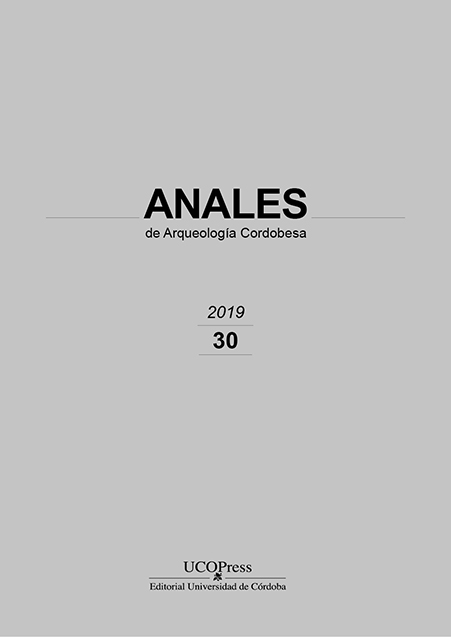A pastry mold of roman time with circus scene found in Septem Fratres (Ceuta)
DOI:
https://doi.org/10.21071/aac.v30i.12443Keywords:
Ceuta, Septem Fratres, pottery mold, kuchenformen, ludi circenses.Abstract
A recent archaeological intervention in the urban center of Ceuta has allowed the documentation of a sector of the dry fish industrial complex of the Roman settlement of Septem Fratres, dated between the end of the 1st century AD. and the first quarter of the fifth century AD. To the east of the wall that delimited the workspace and the pools for fish maceration, a stratigraphic sequence was identified in which stood out a level of the third century AD, characterized by the high number and variety of archaeological material. Among these elements of material culture was recovered a mold of pastry, known as “kuchenformn”. The motif that appears on the back of the mold is a scene of ludi circenses.Downloads
Download data is not yet available.
Downloads
Published
2019-12-15
How to Cite
PÉREZ RIVERA, J. M., & NOGUERAS VEGA, S. (2019). A pastry mold of roman time with circus scene found in Septem Fratres (Ceuta). Anales De Arquelogía Cordobesa, 30, 295–318. https://doi.org/10.21071/aac.v30i.12443
Issue
Section
Artículos
License
Aquellos autores/as que tengan publicaciones con esta revista, aceptan los términos siguientes:- Los autores/as conservarán sus derechos de autor y garantizarán a la revista el derecho de primera publicación de su obra, el cuál estará simultáneamente sujeto a la Licencia de reconocimiento de Creative Commons que permite a terceros compartir la obra siempre que se indique su autor y su primera publicación esta revista.
- Los autores/as podrán adoptar otros acuerdos de licencia no exclusiva de distribución de la versión de la obra publicada (p. ej.: depositarla en un archivo telemático institucional o publicarla en un volumen monográfico) siempre que se indique la publicación inicial en esta revista.
- Se permite y recomienda a los autores/as difundir su obra a través de Internet (p. ej.: en archivos telemáticos institucionales o en su página web) antes y durante el proceso de envío, lo cual puede producir intercambios interesantes y aumentar las citas de la obra publicada. (Véase El efecto del acceso abierto).


